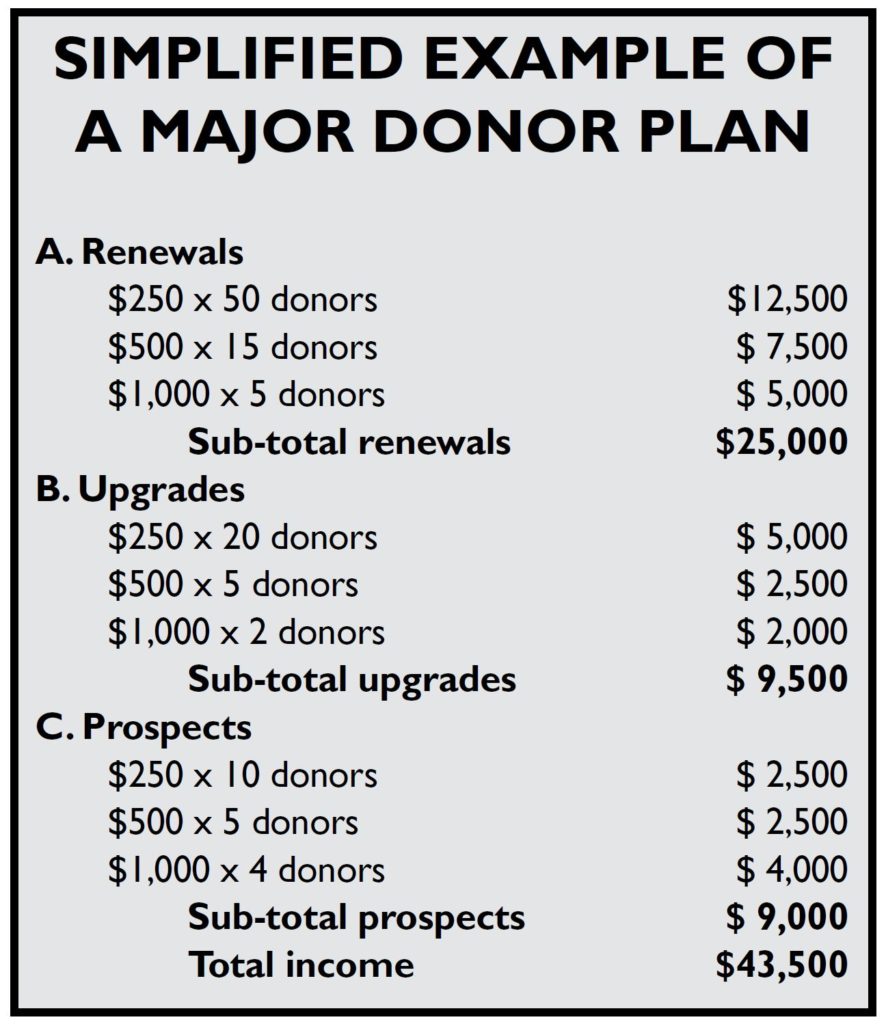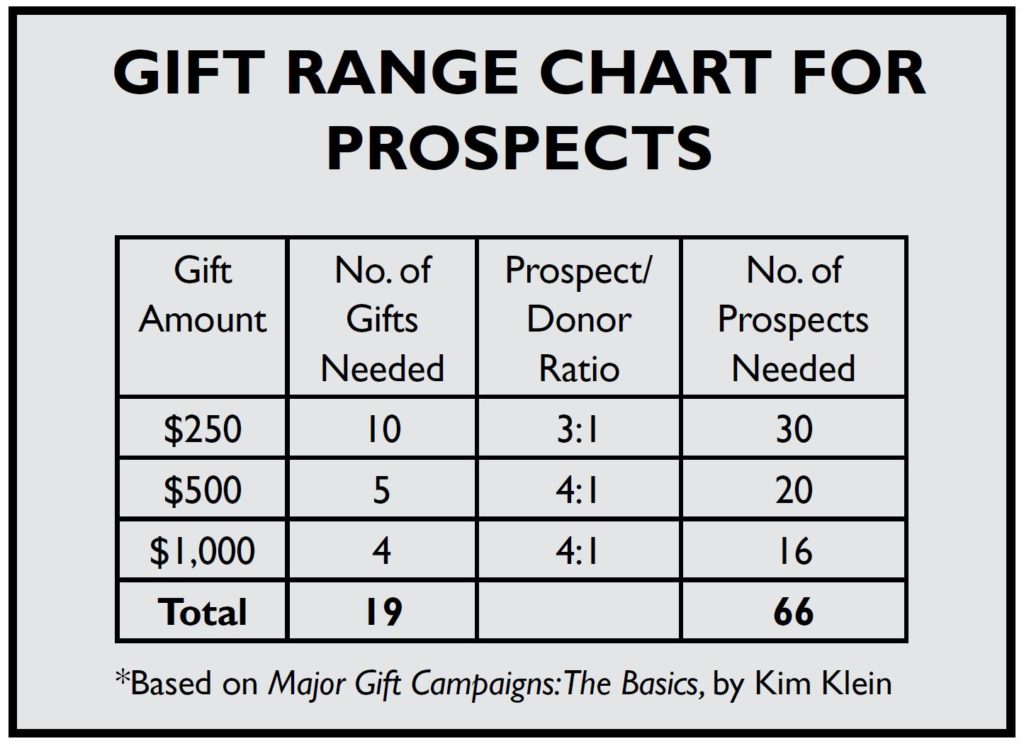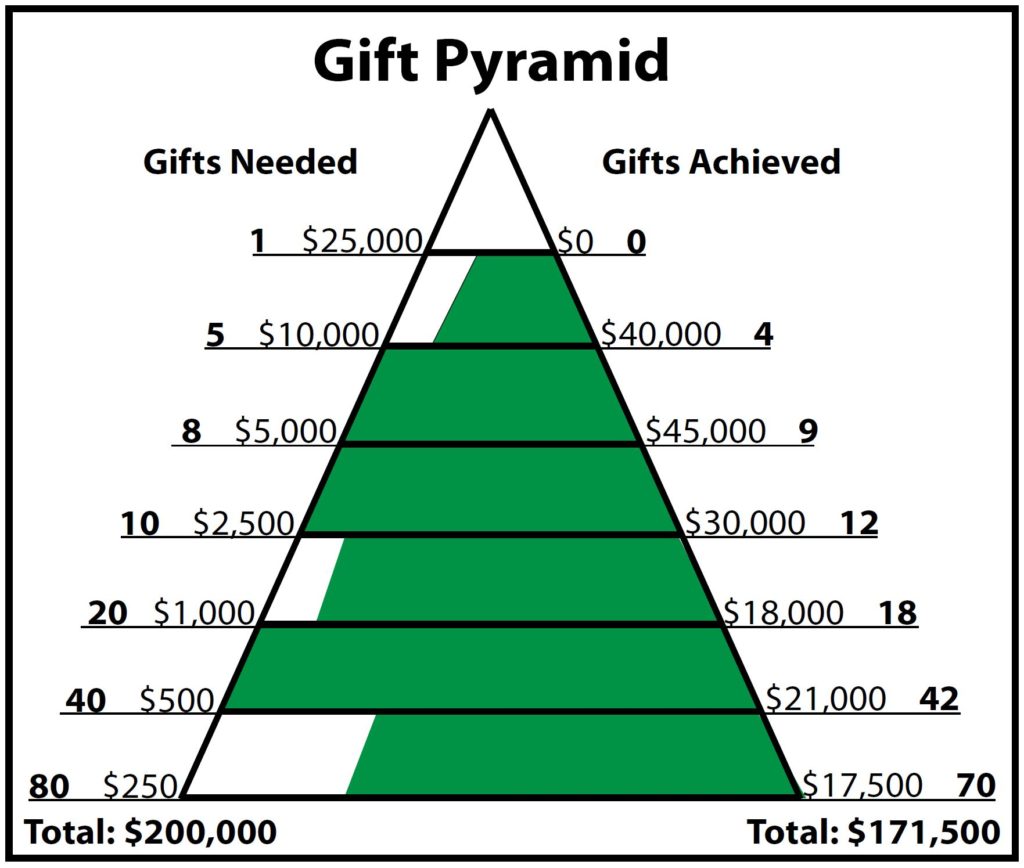How to Build a Successful Major Donor Program
This How to is part of WORC’s community organizer training program.
Why have major donors?
In September 2011, a group of top organizers from across the country met in Washington, D.C. to discuss how to raise more money for community organizing. After two days of discussion, they concluded that:
- A program asking individuals to give is the most straightforward path for groups (of whatever size/scale) to bring in new resources.
- Major donor programs are the quickest way to raise substantial amounts of money.
- Major donor programs have an undeserved reputation for being mysterious, therefore many/most groups: (a) have not approached that work methodically or persistently, and (b) in many cases lack the experience and procedures needed to overcome the fear factor and do it efficiently.
This How To will focus on what it takes to methodically build a major donor program. For more information on the nuts and bolts of donor solicitation, see Fundraising for Social Change, 6th Edition, by Kim Klein.
What is a major donor?
The level of giving that defines a major donor depends on your organization, what it costs to be a member, and the size of other gifts that are solicited through special events, direct mail and other strategies. Most grassroots groups define a major donor as someone who gives at least $100, and many raise the bar higher than that.
It’s all about building relationships…
The heart and soul of community organizing is building public relationships with a cross section of people who live in your communities. Major donor fundraising is simply one more part of that ongoing work.
Nonprofit management specialist Erik Daubert is fond of saying that “fundraising is NOT about money. Fundraising is about connecting people to their passion through your organization.” According to Daubert, relationship building and donor cultivation are core parts of any major donor program. You should search for donors rather than donations.
…And winning your issues
Another key tenet of any major donor program is that it needs to be integrated into your organization’s priority issue campaigns, programs and projects. There is no better time to ask for money than during the heat of a campaign. Even if a campaign is at a less active stage and you are planning more activity, being specific about how a donation will advance the campaign makes fundraising easier for the askers and the donors. You need money to pay for the campaign budget, and you need a broad-based constituency committed to and involved in your campaigns. Major donors fill both needs.
Three types of major donor strategies
Major donor fundraising is all about building strong and lasting relationships with individuals, so it is important to understand the types of strategies that create and improve these relationships.
There are three broad categories of strategies – prospecting, renewing and upgrading . They relate directly to the progression that donors follow: giving for the first time, giving habitually and giving thoughtfully.
1) Prospecting strategies
The main purpose of prospecting is to get people who have not given to your group before to give for the first time. While many people in this category typically join at the basic membership level, people who are likely to give a major gift if asked are called prospects. In order to qualify as a major donor prospect a person must have the ability to give a major gift, a belief in your organization or a similar cause, and a contact with someone in your organization. If one or more of these ABC ingredients is missing, you only have a “suspect”, you need to gather more information.
How does your organization find major donor prospects? Fundraiser wisdom says that every person knows 250 people, and some of these people can give major donations. Start from the inside first by asking the following people for names of prospects:
- board members and other leaders,
- current major donors (a big untapped resource),
- current members,
- lapsed members and major donors,
- your staff.
Then broaden your search and look for major donor prospects among:
- lists of people who have attended your events,
- people who have responded to action alerts, signed petitions, or taken some other action,
- friends, allies and business contacts,
- those who give to other nonprofits (look at websites, annual reports, newsletters, etc.)
2) Renewing strategies
Renewing strategies seek to get existing major donors to renew a second time, a third time, and so on, and are sometimes referred to as habitual giving.
Renewing your existing base of major donors takes a methodical and disciplined approach. Typically, major donor renewals need to be managed on a monthly basis in close coordination with a group’s membership renewal program.
3) Upgrading strategies
Upgrading aims to persuade donors to rank you higher and higher in their giving priorities. Normally these donors are very dedicated to the organization. In upgrading, you ask donors to give a bigger gift regularly, and later to give a bequest. This is known as thoughtful giving. Upgrading strategies seek to make habitual donors into thoughtful donors.
As with renewal strategies, upgrades need to be managed on a monthly basis in coordination with a group’s membership renewal system. Not only can existing major donors be asked to give more, but regular members can also be asked to up their giving and become major donors. Almost anyone who already gives – even at the basic membership level – is a potential major donor.
Analyze your donor base
To formulate a plan that is realistic and achievable, but also challenging, you need to analyze and evaluate your current donor base and organizational capacity. Questions to consider here include:
- How many members do you have, and what is their renewal rate?
- How many major donors do you currently have giving at what levels, and what is their renewal rate?
- Has the number of members and major donors to your group grown, decreased or stayed the same in the last five years?
- What are your group’s strengths and weaknesses in working with major donors?
- How much organizational capacity does your group have to implement a major donor program? Major donor fundraising takes the time and commitment of many people. You need all hands on deck.
Remember, your major donor plan is one part of a multifaceted internal fundraising plan that also includes basic memberships, special events, workplace giving, etc.
Formulate a plan
Veteran fundraiser Gary Delgado says there are four steps to successful fundraising: plan, plan, plan and work. There is no question that successful fundraising depends on good planning, and one hour of planning can save three hours of work. But the final and most important truth is that planning must not take the place of doing. Erik Daubert describes that approach to fundraising as “ready, ready, aim, aim, aim and fail to fire.”
If you are about to set out on a new major donor program, or you want to improve a program that already exists, you need a plan that includes the three strategies previously discussed: prospecting, renewing and upgrading.
ESTABLISH A GIFT RANGE CHART FOR PROSPECTS
Once you’ve got your basic major donor plan in place, you need to pencil out a gift range chart for prospects. In other words, how many prospects do you need in each category to achieve your goals?
A CASE STATEMENT—DON’T LEAVE HOME WITHOUT IT
Now that you’ve analyzed your donor base, formulated your plan, and established a gift range chart for prospects, you need a case statement. A case statement is an internal document that:
- explains why your organization exists,
- articulates your goals and objectives, and how you will accomplish them,
- summarizes your history and track record, and
- describes your capacity to deliver what you promise.
The case statement contains the basic information that anyone needs to know to prepare for and solicit a major donor, and ensures everyone is on the same page. It is a living document that changes over time as the organization grows and matures, and it is essential for major donor outreach (not to mention all fundraising efforts).
If volunteers participate in writing the case statement they will remember it better and be more likely to use it during donor solicitation.
DONOR MANAGEMENT— Having THE right SYSTEM
Having the right system in place to manage your major donor program and lots of disparate information makes all the difference in the world. If you still keep track of donors with index cards or napkins, or you have a data base that doesn’t do what you need it to do, or you lack accountability mechanisms for staff and leaders, you are in trouble.
For a major donor program to succeed, you need a fully integrated system that includes:
- An overall plan and case statement,
- A cooperative team effort among staff and leaders,
- Clearly defined roles and responsibilities,
- A commitment to asking people for money in person,
- A culture and practice of accountability,
- Good communication mechanisms,
- Commonly understood budgets for specific campaigns and the entire organization that are available for reference and donor solicitation,
- A commitment to provide quality training, support and practice time for volunteers and staff, and
- A record keeping system (normally a database for larger groups) that allows you to be more organized, efficient and focused.
An integrated system of this kind means better marketing, better donor relations, better donor solicitation, and better fundraising. What’s not to like about that?
Myths about giving money and time
It’s common in grassroots groups to hear someone say something like this: “I don’t think we should ask Mary to become a major donor because she already gives so much of her time.” Discard this notion. Time is not the same as money. You cannot pay your staff or purchase office supplies with time. You need both time and money.
A study by the Fidelity Charitable Gift Fund and VolunteerMatch found that people who volunteer their time donate ten times more money than those who do not give their time, and two-thirds of those who give their money donate to the same organization they volunteer for. What’s the takeaway? If you want to grow your donor base, invest in involving more people.
More Americans find it easier to give money than time. According to a poll conducted by the international Charities Aid Foundation, sixty-five percent of Americans said they donated money to charity in 2011, while only 43 percent volunteered their time.
Low Wage earners give generously
A Center on Philanthropy study found that low wage earners step up to the charity plate big time. Households with incomes below $20,000 gave a higher percentage of their earnings to charity than any other income group. The lesson: don’t rule out people with low incomes as major donors, especially if you work on issues that tap into their self-interest.
You can’t save time
“It is clear to me from years of working with nonprofit organizations that you cannot save time. You can put time in on the front end, planning, thinking things through and doing things right, or you can ‘save time’ on the front end and put it in at the back end, clearing up the mess, handling disgruntled donors, and having to do more fundraising because what you have done did not raise the money you need.”
—Kim Klein, Fundraising for Social Change




Help create a healthy and sustainable West. Support WORC today.
